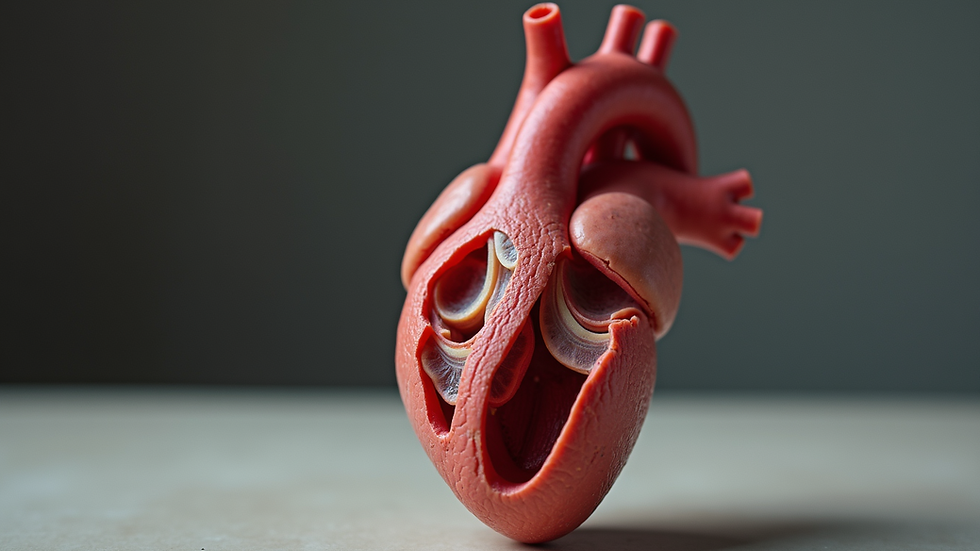Exploring Gender Differences in Heart Attack Risks for Women and Men
- Shane Yole
- Aug 31
- 3 min read

Heart disease is one of the leading causes of death globally. While many still view it as primarily a "man's disease," women are equally at risk. Understanding the heart attack risks in women compared to men is essential for prevention and treatment. This blog post will highlight the key factors influencing heart attack risks in women, the symptoms that may differ from those in men, and the significance of awareness and education.
The Gender Gap in Heart Disease
Historically, research on heart disease has focused more on men, creating a significant gap in understanding women's heart health. Women often experience unique risk factors and symptoms, leading to delays in diagnosis and treatment.
Research shows that women tend to develop heart disease later in life than men. For instance, women typically experience their first heart attack about seven to ten years after men. This is often after menopause when estrogen levels drop. This hormonal change can lead to increased cholesterol and blood pressure levels, both critical risk factors for heart disease.
Women may also exhibit atypical symptoms during heart attacks. According to the American Heart Association, nearly 60% of women report experiencing symptoms like fatigue, shortness of breath, and nausea, instead of the classic chest pain commonly seen in men. With such variations, timely recognition becomes vital for effective treatment.
Risk Factors Unique to Women
Several risk factors are particularly relevant to women concerning heart disease:
Hormonal Changes: The reduction of estrogen after menopause raises the risk of heart disease. Hormonal replacement therapy (HRT) can be a preventive solution, but it's essential to discuss its benefits and risks with a healthcare provider.
Pregnancy-Related Conditions: Issues like gestational diabetes, preeclampsia, and high blood pressure during pregnancy can increase a woman's long-term heart disease risk by up to 50%.
Autoimmune Diseases: Women are more likely to suffer from autoimmune disorders, such as lupus and rheumatoid arthritis. These conditions can result in chronic inflammation, heightening heart disease risk, making heart health management crucial for affected individuals.
Mental Health: Women experience higher rates of depression and anxiety, which have been linked to heart disease. A meta-analysis found that women with depression face a higher heart disease risk, highlighting the link between mental and physical health. Stress management and mental health support are essential for heart disease prevention.
Lifestyle Factors: While smoking, poor diet, and lack of exercise affect both genders, women may encounter unique challenges. For example, caregiving roles can make it difficult for women to prioritize their health, leading to delayed medical visits.
Symptoms of Heart Attacks in Women
Recognizing heart attack symptoms is crucial for timely intervention. Women may experience different symptoms than men, which can lead to misdiagnosis. Common symptoms in women include:
Unusual Fatigue: Many women report feeling extreme fatigue days or weeks before a heart attack. For instance, a study indicated that about 70% of women may experience significant tiredness leading up to an event.
Shortness of Breath: This can happen with or without chest discomfort. It is crucial for women to be aware that shortness of breath alone can be indicative of heart issues.
Nausea or Vomiting: Women may experience gastrointestinal symptoms, which can often be mistaken for other issues.
Back or Jaw Pain: Discomfort in the back, neck, or jaw can signal a heart attack in women. Recognizing these signs can prompt timely medical attention, potentially saving lives.
The Importance of Awareness and Education
Education and awareness are vital for reducing heart disease risks in women. Healthcare providers need training to recognize the distinct symptoms and risk factors associated with women’s heart health.
Women, too, should take proactive measures to educate themselves about their heart health. Regular check-ups, blood pressure monitoring, and cholesterol screenings are critical for early detection and prevention.
Incorporating lifestyle changes can greatly impact heart health. Adopting a balanced diet rich in fruits, vegetables, and whole grains and engaging in regular exercise can significantly lower heart disease risk. Additionally, effective stress management techniques such as yoga or mindfulness can contribute to overall well-being and heart health.
Taking Charge of Heart Health
Women face a comparable risk of heart attack as men, but the influencing factors often vary. By understanding these differences, we can better prevent and treat heart disease.
Raising awareness about the unique symptoms and risk factors associated with heart disease in women empowers them to take control of their heart health. Regular check-ups, educational efforts, and lifestyle adjustments can all play a significant role in reducing heart attack risks.
Heart disease does not discriminate. Therefore, it is crucial for both women and men to prioritize their heart health. Promoting a culture of awareness and education can help us strive toward a future where heart disease is no longer a leading cause of death for either gender.











Comments